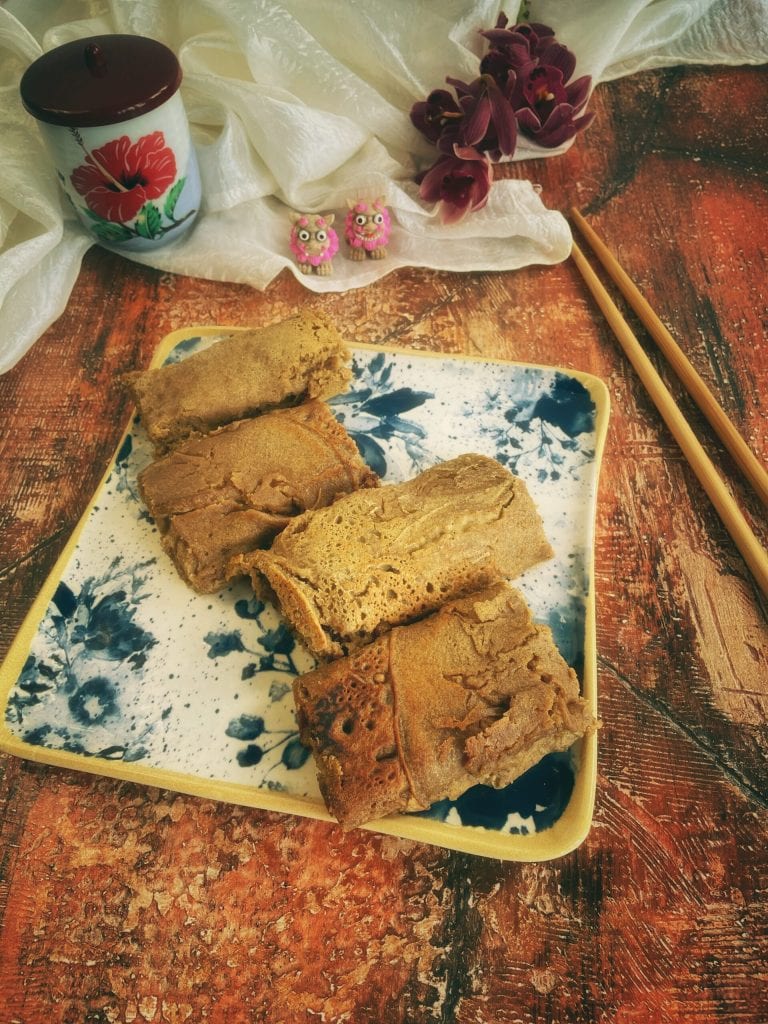The Chinpin (チンピン) or Chinbin (チンビン) is a traditional sweet from Okinawa, similar to a rolled crêpe, made with flour and dark brown sugar (kokutō).
It is often associated with local festivities, such as Yukka nu Hi, a celebration for children’s health, during which it is offered to ancestors and enjoyed with family.
May 4th of the lunar calendar is called “Yukkanuhi” (the fourth day), which is equivalent to Boys’ Festival in mainland Japan.
On this day, in Naha and Itoman, Hari is celebrated, during which families offer chinbin to the gods and Buddhist altars to pray for their children’s healthy growth.
It is believed that the name derives from the Chinese word jiānbǐng (Chinese version), which could be based on the Mandarin pronunciation of “qianbing” (jiānbǐng) or other dialectal sounds.
Chinese pancakes are not necessarily made with wheat flour, but wheat flour-based dishes were developed in northern and northwestern China and are thought to have been transmitted to Ryukyu – Okinawa Prefecture – from there. In Okinawa.
Traditionally, Chinpin is consumed without filling, but it can be paired with sugar syrup or honey for an extra touch of sweetness.

- Difficulty: Medium
- Cost: Very economical
- Preparation time: 5 Minutes
- Portions: 6 Pieces
- Cooking methods: Griddle
- Cuisine: Japanese
- Seasonality: All seasons, Spring
Ingredients
- 1 1/4 cups flour
- 3/4 cup kokuto (or whole cane sugar)
- 3/4 cup water
- 1 egg
- 1 teaspoon baking powder
- as needed vegetable oil
Steps
In a bowl, mix the sifted flour with the baking powder.
In a small pot, dissolve the brown sugar in the water over medium heat, stirring until you obtain a syrup. Let it cool down.
Incorporate the egg into the sugar syrup, mixing well.
Gradually pour the liquid mixture into the bowl with the flour, stirring until you get a smooth batter.
Add the vegetable oil and mix.
Heat a non-stick pan over medium heat and lightly grease it.
Pour a scoop of batter into the pan, spreading it evenly to form a thin crêpe.
Cook until bubbles appear on the surface and the edges start to peel away. Flip the crêpe and cook the other side for about 30 seconds.
Remove from the pan and, while still warm, roll the crêpe onto itself.
Repeat the process with the remaining batter.

FAQ (Questions and Answers)
What is Kokutō?
Kokutō (黒糖), or “black sugar” in Japanese, is a raw cane sugar derived from the juice extracted from sugarcane: unrefined, produced particularly in Okinawa province, Japan.
It is characterized by a unique taste, slightly bitter with hints of caramel and dried fruits, due to the production process that does not involve refining.
The word “kokutō” (黒糖) in Japanese translates literally to “black sugar”.
In English, kokutō can be called “Okinawan black sugar”, “muscovado sugar“, or “dark brown sugar”.


